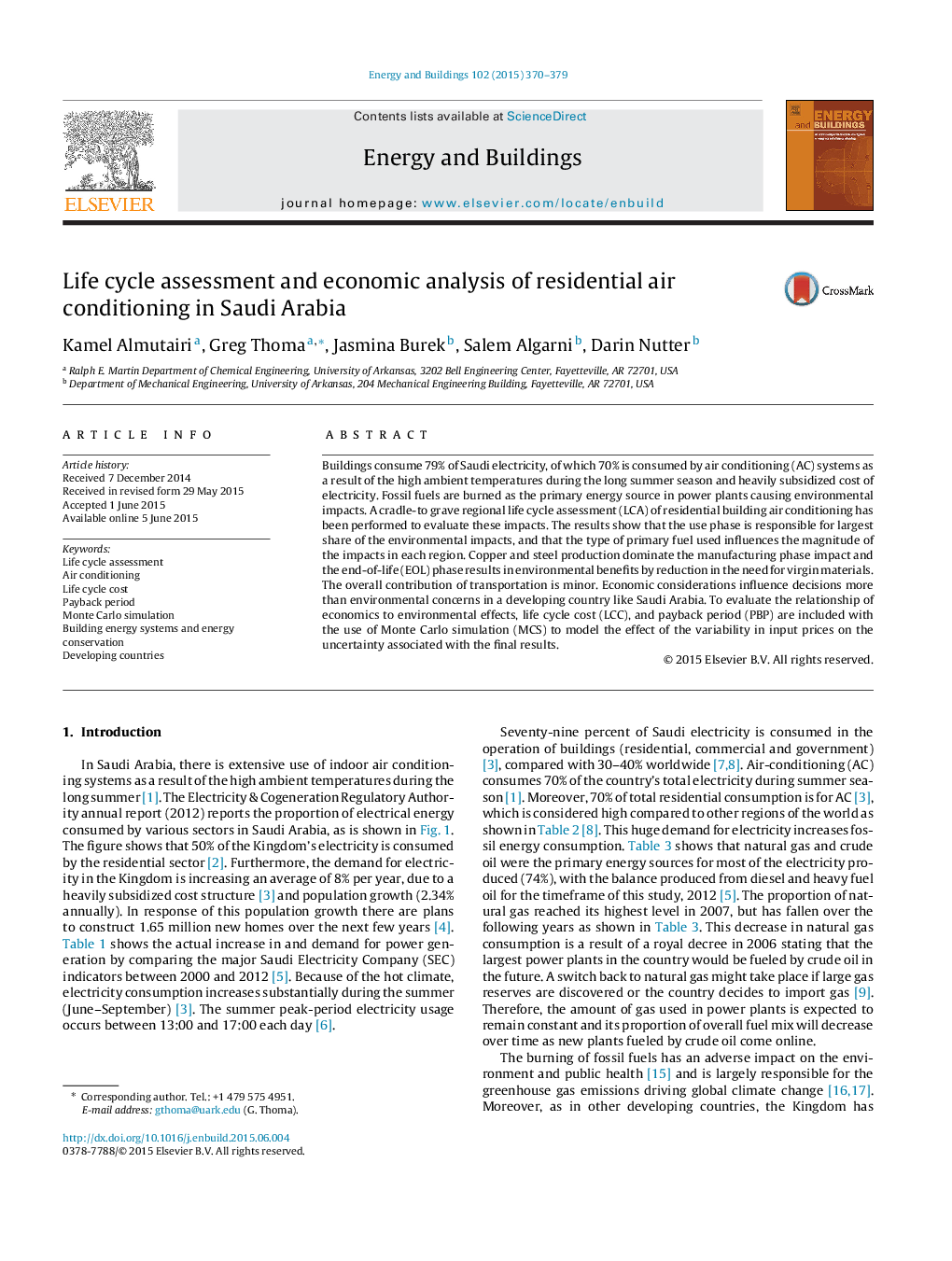| Article ID | Journal | Published Year | Pages | File Type |
|---|---|---|---|---|
| 262550 | Energy and Buildings | 2015 | 10 Pages |
•The use phase is responsible for largest share of the environmental impacts.•Copper and steel production dominate the manufacturing phase.•The overall contribution of transportation is minor.•With electricity subsidy, switching to more efficient units is not always beneficial.
Buildings consume 79% of Saudi electricity, of which 70% is consumed by air conditioning (AC) systems as a result of the high ambient temperatures during the long summer season and heavily subsidized cost of electricity. Fossil fuels are burned as the primary energy source in power plants causing environmental impacts. A cradle-to grave regional life cycle assessment (LCA) of residential building air conditioning has been performed to evaluate these impacts. The results show that the use phase is responsible for largest share of the environmental impacts, and that the type of primary fuel used influences the magnitude of the impacts in each region. Copper and steel production dominate the manufacturing phase impact and the end-of-life (EOL) phase results in environmental benefits by reduction in the need for virgin materials. The overall contribution of transportation is minor. Economic considerations influence decisions more than environmental concerns in a developing country like Saudi Arabia. To evaluate the relationship of economics to environmental effects, life cycle cost (LCC), and payback period (PBP) are included with the use of Monte Carlo simulation (MCS) to model the effect of the variability in input prices on the uncertainty associated with the final results.
